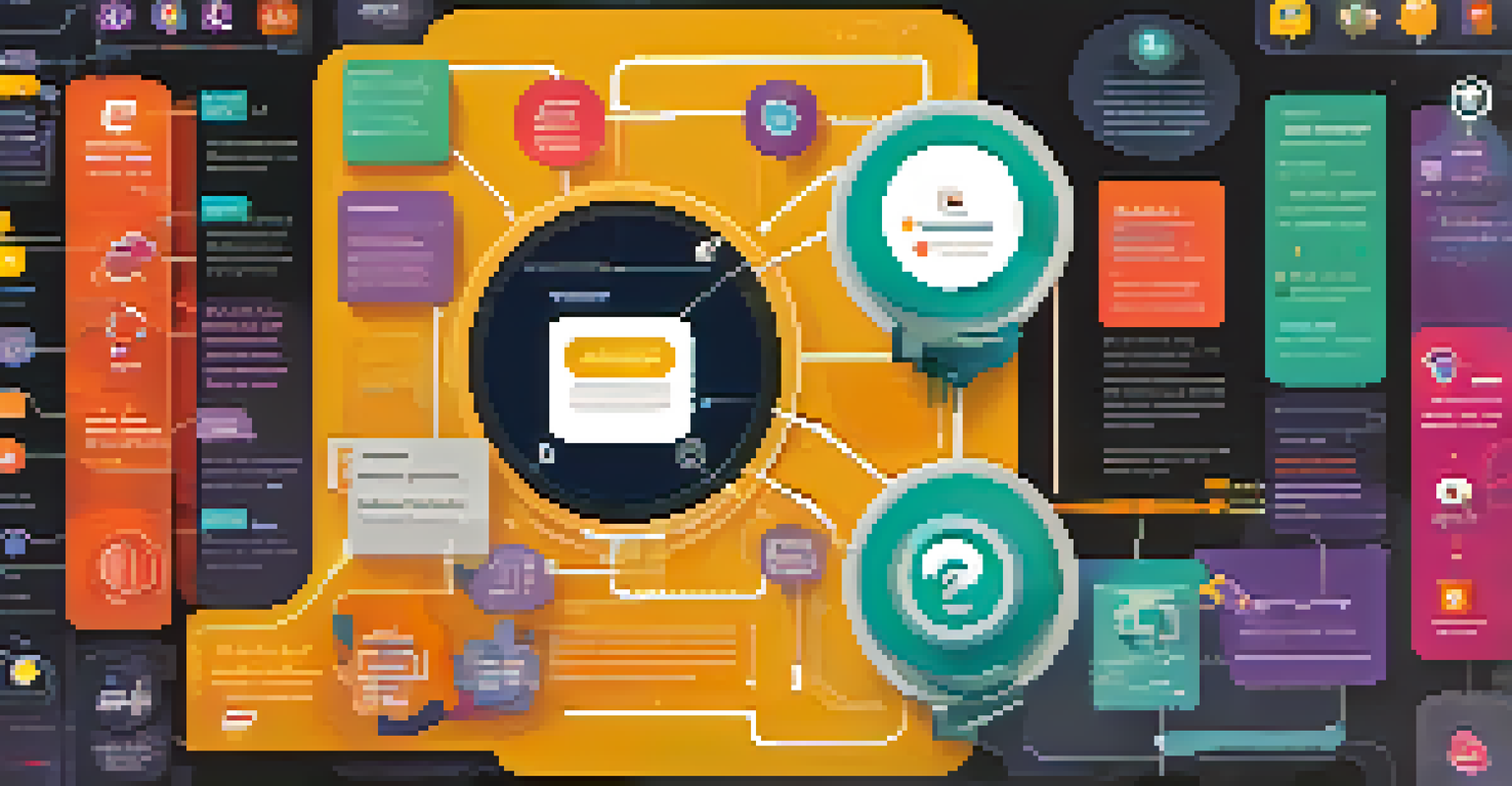Understanding the Basics of Chatbot Development for Beginners

What is a Chatbot and How Does it Work?
A chatbot is a software application designed to simulate conversation with human users, especially over the Internet. They can be as simple as a basic rule-based system or as complex as AI-driven conversational agents. At their core, chatbots process user inputs and provide responses based on predefined rules or machine learning algorithms.
The greatest benefit of artificial intelligence will be its ability to augment human intelligence, not replace it.
Think of chatbots as digital assistants that can help answer questions, provide support, or even take orders. They operate 24/7, making them a valuable tool for businesses in enhancing customer service. By understanding user intents, chatbots can deliver more personalized interactions.
Whether you're using a chatbot on a website or messaging platform, their primary goal is to streamline communication. The technology behind them can range from simple keyword matching to advanced natural language processing (NLP) capabilities, making them versatile for various applications.
Why Should You Consider Building a Chatbot?
There are numerous benefits to developing a chatbot, especially in today's fast-paced digital world. For businesses, chatbots can handle multiple customer inquiries simultaneously, saving time and resources. This can lead to improved customer satisfaction, as users receive instant responses to their questions.

Moreover, chatbots can gather valuable data about user preferences and behavior, allowing businesses to refine their offerings. This data-driven approach enables more targeted marketing strategies and enhances overall user experience. Imagine being able to predict what your customers need before they even ask!
Chatbots Enhance Customer Service
Chatbots operate 24/7, providing instant responses that improve customer satisfaction and support.
On a personal level, building a chatbot can be an exciting project that enhances your programming and problem-solving skills. It opens up opportunities to explore new technologies, such as machine learning and AI, making it a worthwhile endeavor for tech enthusiasts.
Key Components of Chatbot Development
Creating a chatbot involves several key components, starting with the user interface (UI). The UI is what users interact with, whether it's through text, voice, or even graphical elements. A well-designed UI can enhance user engagement and make interactions feel more natural.
The only way to deal with the future is to function efficiently in the now.
Next, you'll need to define the chatbot's purpose and the types of questions it should handle. This involves creating a knowledge base or script that outlines potential user interactions. Think of it as laying the groundwork for your chatbot’s personality and functionality.
Finally, integrating the chatbot with various platforms (like social media or websites) is crucial for accessibility. This can involve using APIs to connect your chatbot to existing systems, ensuring it can access and retrieve information effectively. Each component plays a vital role in delivering a seamless experience for users.
Choosing the Right Technology for Your Chatbot
Selecting the right technology stack is essential for the successful development of your chatbot. There are numerous platforms and tools available, ranging from simple drag-and-drop builders to more advanced coding frameworks. For beginners, no-code platforms like Chatfuel or ManyChat can be a great starting point.
If you're looking for more customization and control, you might explore programming languages like Python or JavaScript, which offer libraries specifically for chatbot development. This approach requires more technical knowledge but allows for greater flexibility in features and functionalities.
NLP Makes Conversations Natural
Natural Language Processing enables chatbots to understand and engage in meaningful conversations with users.
Additionally, consider the deployment options available. Will your chatbot reside on your website, or will it be integrated into messaging apps like Facebook Messenger? The choice of technology should align with your goals and the desired user experience, ensuring your chatbot reaches the right audience.
Understanding Natural Language Processing in Chatbots
Natural Language Processing, or NLP, is a crucial aspect of many modern chatbots. It enables the bot to understand and interpret human language, making conversations feel more natural and engaging. Without NLP, chatbots would struggle to comprehend user intents and respond appropriately.
Think of NLP as the translator between human language and computer language. It breaks down user queries into manageable parts, allowing the chatbot to extract meaning and context. This process often involves techniques like tokenization, sentiment analysis, and entity recognition.
By leveraging NLP, developers can create chatbots that not only respond to commands but also engage in meaningful conversations. This empowers users to interact with the chatbot in a way that feels intuitive, leading to a more satisfying user experience.
Testing and Iterating Your Chatbot
Once your chatbot is developed, testing is a critical step before launching it to the public. This involves simulating conversations to identify any issues or areas for improvement. By testing various scenarios, you can ensure your chatbot handles different user inputs effectively.
Feedback is invaluable during this phase. Engaging real users for beta testing can provide insights into how well your chatbot meets their needs. Encourage testers to share their experiences, as this can highlight unforeseen problems or areas that require refinement.
Future Trends in Chatbots
The integration of AI and voice recognition technology is shaping the future of chatbots, making them more intelligent and user-friendly.
After launching, it's essential to continue monitoring your chatbot's performance. Regular updates and iterations based on user feedback and analytics will help enhance its functionality over time. Think of it as a living entity that evolves to better serve its users.
Future Trends in Chatbot Development
As technology advances, the future of chatbot development looks promising. One trend is the increasing use of AI and machine learning to create more intelligent and adaptive chatbots. These bots can learn from interactions and improve their responses over time, leading to a more personalized user experience.
Another exciting trend is the integration of chatbots with voice recognition technology. This opens up new avenues for interaction, allowing users to communicate with chatbots using their voices rather than typing. Imagine having a conversation with your chatbot as if you were chatting with a friend!

Moreover, the focus on omnichannel support is growing, where chatbots seamlessly transition between different platforms. This ensures a consistent user experience, whether someone is interacting via a website, mobile app, or social media. Keeping an eye on these trends will help you stay ahead in the ever-evolving world of chatbot development.